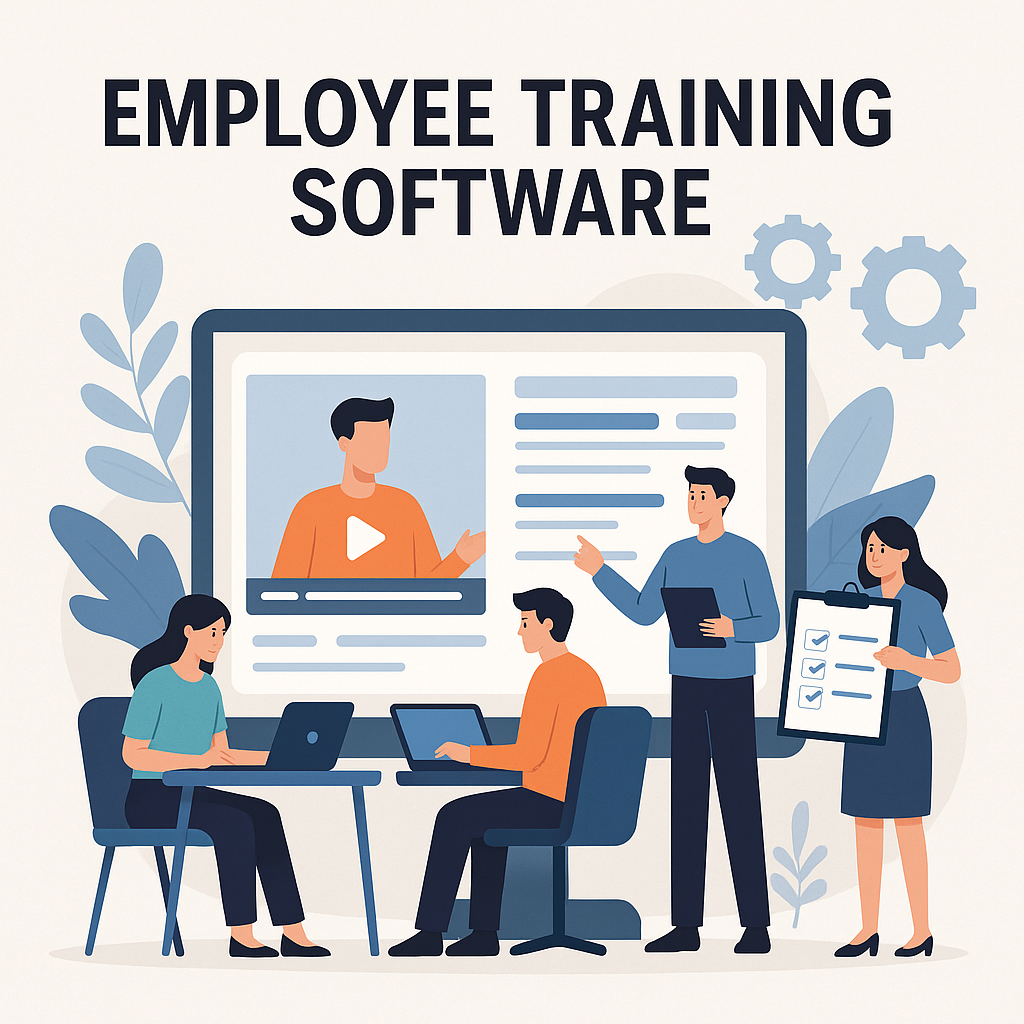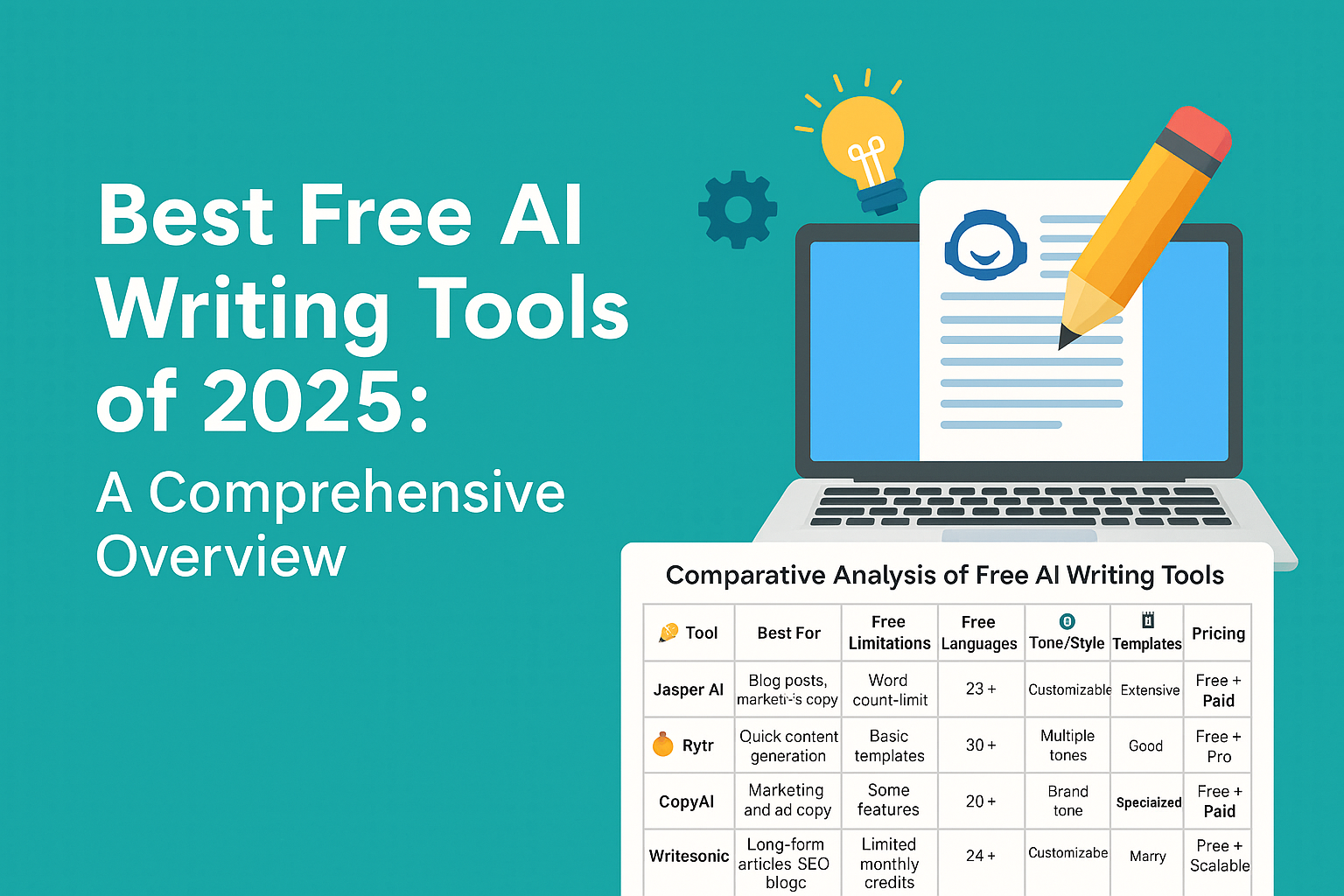The Ultimate Guide to Employee Training Software in 2025
In today’s rapidly changing business landscape, employee training software has transformed from simple digital learning platforms to sophisticated, intelligent systems that drive organizational growth and performance. Companies are now leveraging cutting-edge technology to revolutionize how employees acquire, retain, and apply critical skills.

Technological Advancements Reshaping Corporate Learning
Modern employee training software goes far beyond traditional classroom-based approaches. These advanced platforms integrate artificial intelligence, machine learning, and personalized learning paths to create dynamic training experiences tailored to individual employee needs.
Key Features of Contemporary Training Solutions
- Adaptive learning algorithms
- Real-time performance tracking
- Mobile-compatible interfaces
- Comprehensive analytics dashboards
- Microlearning modules
Data-Driven Learning Experiences
Organizations are now utilizing sophisticated employee training software that captures intricate performance metrics. These platforms can predict skill gaps, recommend personalized learning interventions, and align training programs directly with strategic business objectives.
Impact of AI-Powered Training Platforms
Artificial intelligence has dramatically enhanced the effectiveness of training software. By analyzing individual learning patterns, AI algorithms can create customized learning experiences that adapt in real-time to an employee’s progress, comprehension, and skill development.
Cost-Effective Training Solutions
Cloud-based training software has significantly reduced implementation and maintenance costs for businesses. Companies can now deploy comprehensive training programs without substantial infrastructure investments, making advanced learning accessible to organizations of all sizes.
Integration Capabilities
Modern training platforms seamlessly integrate with existing HR management systems, learning management systems, and enterprise resource planning tools. This interconnectedness allows for streamlined data flow and comprehensive performance tracking across multiple organizational functions.
Emerging Trends in Training Technology
- Virtual reality simulations
- Gamification of learning modules
- Personalized learning paths
- Microlearning experiences
- Social learning integration
Compliance and Security Considerations
Advanced employee training software now includes robust security features to protect sensitive corporate and personal information. Multi-factor authentication, encrypted data transmission, and granular access controls have become standard requirements for modern training platforms.
Remote Learning Transformation
The global shift towards remote and hybrid work environments has accelerated the development of flexible, accessible training solutions. Employee training software now supports distributed workforce learning, enabling consistent skill development regardless of geographical location.
Measuring Training Effectiveness
Sophisticated analytics tools embedded within modern training platforms provide unprecedented insights into learning outcomes. Organizations can now quantify the direct impact of training programs on individual and collective performance, allowing for continuous improvement and strategic alignment.
Future of Employee Training Software
The next generation of training platforms will likely incorporate more immersive technologies, such as augmented reality and advanced predictive analytics. These innovations will enable even more personalized, engaging, and effective learning experiences that adapt in real-time to evolving business needs.
As businesses continue to recognize the critical role of continuous learning in maintaining competitive advantage, employee training software will undoubtedly become an increasingly strategic investment for forward-thinking organizations.
Key Features to Look for in Top-Tier Training Management Systems
When selecting an employee training software, organizations must carefully evaluate critical features that drive learning effectiveness and operational efficiency. Modern training management systems have evolved to offer comprehensive solutions that transform traditional workplace learning approaches.
Comprehensive Learning Management Capabilities
Top-tier training management software should provide robust learning management features that seamlessly integrate multiple training modalities. This includes:
- Interactive online course creation
- Video-based learning modules
- Customizable training paths
- Mobile-responsive design
- Real-time progress tracking
Advanced Analytics and Reporting
Sophisticated training platforms deliver deep insights into learning outcomes. Intelligent reporting tools enable managers to:
– Monitor individual and team performance
– Identify skill gaps
– Generate compliance documentation
– Assess training return on investment
– Predict future learning needs
Learn how document automation tools compare in capturing performance data.
User Experience and Interface Design
- Drag-and-drop content management
- Personalized learner dashboards
- Seamless navigation
- Accessibility features
- Responsive technical support
Integration Capabilities
Modern training management systems must communicate effectively with existing organizational technologies. Critical integration points include:
– Human resource management systems
– Performance tracking platforms
– Customer relationship management tools
– Enterprise resource planning software
– Single sign-on authentication protocols
Scalability and Customization
Exceptional training software adapts to organizational complexity. Key scalability features include:
• Unlimited user licensing
• Multi-language support
• Configurable learning workflows
• Enterprise-level security protocols
• Flexible pricing models
Compliance and Security Mechanisms
Organizations require robust compliance tracking and data protection. Essential security features encompass:
– GDPR and international privacy compliance
– Multi-factor authentication
– Encrypted data storage
– Detailed audit trails
– Role-based access controls
Content Development Tools
- Template-based course design
- Multimedia content integration
- Interactive assessment builders
- Gamification elements
- Knowledge retention mechanisms
Cost-Effectiveness Considerations
While evaluating training management systems, organizations should analyze long-term value beyond initial pricing. Consider:
– Implementation complexity
– Training requirements
– Potential productivity gains
– Ongoing maintenance expenses
– Scalability potential
Emerging Technology Compatibility
Forward-thinking training platforms incorporate cutting-edge technological innovations:
• Artificial intelligence recommendations
• Machine learning adaptation
• Virtual reality training simulations
• Predictive skill development algorithms
• Adaptive learning technologies
Implementation and Support Infrastructure
- Dedicated onboarding specialists
- Continuous technical support
- Regular platform updates
- Community knowledge bases
- Professional consultation services
Selecting the right employee training software represents a strategic investment in organizational talent development. By prioritizing comprehensive features, technological adaptability, and user-centric design, companies can transform learning experiences and drive meaningful professional growth.
Successful implementation requires thorough evaluation, stakeholder alignment, and a commitment to continuous improvement in training methodologies.
Cost-Effective Implementation Strategies for Corporate Learning Platforms
In today’s competitive business landscape, organizations are constantly seeking efficient ways to enhance employee skills while managing budgetary constraints. Modern corporations recognize that strategic investment in learning platforms can drive significant workforce development without breaking the bank.
Maximizing Budget-Friendly Learning Solutions
Smart companies are discovering innovative approaches to implement robust training systems without excessive spending. The key lies in selecting scalable software that offers comprehensive features at reasonable price points. Cloud-based platforms have emerged as game-changers, providing flexible and cost-effective learning management solutions.
Essential Cost-Reduction Strategies
- Leverage open-source learning management systems
- Utilize modular training software with pay-per-user pricing
- Implement blended learning approaches combining digital and traditional training methods
- Negotiate volume licensing agreements with software providers
Technology-Driven Training Optimization
Modern employee training software integrates advanced technologies like artificial intelligence and machine learning to personalize learning experiences. These intelligent systems can track individual employee progress, recommend tailored learning paths, and identify skill gaps more efficiently than traditional training methods.
Related: 5 AI Automation Tools That Will Save You 30+ Hours
Key Technology Features to Consider
| Feature | Cost-Saving Potential |
|---|---|
| Adaptive Learning Algorithms | Reduces training time by 40% |
| Automated Progress Tracking | Minimizes administrative overhead |
| Mobile Learning Compatibility | Eliminates physical training infrastructure costs |
Strategic Implementation Considerations
Organizations must conduct thorough needs assessments before selecting training platforms. This involves analyzing current workforce skills, identifying critical learning objectives, and evaluating software compatibility with existing technological infrastructure.
Practical Selection Criteria
- Assess scalability and future growth potential
- Evaluate integration capabilities with existing systems
- Compare total cost of ownership, including implementation and maintenance
- Review vendor support and ongoing update commitments
Financial Optimization Techniques
Successful companies are adopting creative financing models for training platforms. Subscription-based services, tiered pricing structures, and bundled package deals offer significant cost advantages compared to traditional training investments.
Emerging trends indicate that companies investing in sophisticated yet affordable learning platforms can achieve remarkable returns. These platforms not only reduce training expenses but also enhance employee engagement, skill development, and overall organizational performance.
Data-driven decision-making becomes crucial when selecting training technologies. Organizations should prioritize solutions offering comprehensive analytics, allowing them to measure learning outcomes, track skill progression, and demonstrate tangible training investments.
Performance Measurement Metrics
• Employee skill acquisition rate
• Training completion percentages
• Return on learning investment
• Knowledge retention levels
By adopting a strategic approach to employee training software selection, organizations can create powerful learning ecosystems that drive continuous improvement while maintaining financial prudence. The most successful companies view training platforms not as expenses but as strategic investments in human capital development.
Continuous evaluation and adaptation remain critical. As technology evolves and workforce dynamics change, organizations must remain flexible, regularly reassessing their training strategies to ensure maximum effectiveness and efficiency.
Measuring ROI and Performance Impact of Employee Training Technologies
In today’s competitive business landscape, organizations are increasingly investing in employee training software to enhance workforce capabilities and drive organizational performance. Understanding the true value of these technological investments requires a comprehensive approach to measuring return on investment (ROI) and performance impact.
Key Performance Metrics for Training Technologies
Effective evaluation of employee training software goes beyond simple completion rates. Sophisticated organizations now implement multi-dimensional assessment strategies that capture both quantitative and qualitative insights. Critical metrics include:
- Employee skill progression
- Knowledge retention rates
- Performance improvement tracking
- Behavioral change indicators
- Productivity enhancement measurements
Advanced ROI Calculation Methodologies
Calculating the true financial impact of training technologies requires a nuanced approach. Companies are developing sophisticated models that integrate multiple data points to demonstrate tangible and intangible returns. These models typically incorporate:
- Direct cost savings from reduced training expenses
- Increased employee productivity
- Reduced turnover rates
- Enhanced organizational efficiency
- Improved employee engagement metrics
Performance Impact Assessment Framework
Modern organizations leverage comprehensive assessment frameworks that go beyond traditional evaluation methods. These frameworks typically include:
| Metric | Description |
|---|---|
| Employee Skill Acquisition Rate | Speed at which employees gain new competencies |
| Training Completion Percentages | How many users complete their assigned modules |
| Return on Learning Investment | Cost-to-benefit ratio of implemented training programs |
| Knowledge Retention Levels | Assessment of how well information is retained post-training |
Technology-Driven Performance Tracking
Cutting-edge employee training software now incorporates advanced analytics and artificial intelligence to provide unprecedented insights into learning effectiveness. These technologies enable real-time performance monitoring, predictive skill gap analysis, and personalized learning pathways.
Critical Evaluation Considerations
Successful ROI measurement requires a holistic approach that considers multiple factors:
- Alignment with organizational strategic objectives
- Individual learning style adaptation
- Long-term skill development potential
- Scalability of training interventions
- Cost-effectiveness of implementation
Strategic Implementation Recommendations
Organizations seeking to maximize the impact of employee training technologies should consider the following strategic approaches:
- Develop comprehensive baseline performance metrics
- Implement continuous feedback mechanisms
- Utilize data-driven decision-making processes
- Create personalized learning experiences
- Integrate training outcomes with performance management systems
The most successful organizations view employee training software as a strategic investment rather than a mere compliance requirement. By implementing rigorous measurement techniques and embracing technology-driven learning approaches, companies can transform their workforce development strategies.
Ultimately, the true value of employee training technologies lies not just in their implementation, but in their ability to drive meaningful performance improvements and create a culture of continuous learning and development.
Cloud-Based vs. On-Premise Training Software: Comparative Analysis
Modern organizations are increasingly focused on optimizing their employee training strategies, and the choice between cloud-based and on-premise training software has become a critical decision. Each approach offers unique advantages and challenges that can significantly impact an organization’s learning and development ecosystem.
Performance and Accessibility Considerations
Cloud-based training software provides unprecedented flexibility, allowing employees to access learning materials from anywhere with an internet connection. This accessibility translates to seamless remote learning experiences, especially crucial in today’s distributed workforce environments. On-premise solutions, conversely, offer more controlled access within organizational networks, which can be advantageous for businesses with strict security protocols.
Cost Dynamics
When evaluating financial implications, cloud-based training platforms typically present lower upfront investment. Organizations can leverage subscription models that scale with their workforce, avoiding substantial hardware and infrastructure expenses. On-premise solutions require significant initial capital for server infrastructure, software licenses, and ongoing maintenance, making them potentially more expensive in the short and long term.
Scalability Factors
- Cloud platforms offer instant scalability
- Easy integration with existing technological ecosystems
- Automatic updates without additional hardware investments
- Reduced IT management overhead
Security Landscape
Security remains a paramount concern for training software selection. On-premise solutions provide direct control over data storage and access, appealing to organizations in regulated industries like healthcare and finance. Cloud platforms have dramatically improved security protocols, implementing advanced encryption, multi-factor authentication, and continuous monitoring to protect sensitive training data.
Technical Infrastructure Requirements
| Feature | Cloud-Based | On-Premise |
|---|---|---|
| Initial Setup Cost | Low | High |
| Maintenance Complexity | Low | High |
| Customization Potential | Moderate | Extensive |
Integration Capabilities
Modern cloud-based training platforms excel in seamless integration with existing HR systems, learning management platforms, and productivity tools. This interconnectedness allows for more comprehensive tracking, reporting, and personalized learning experiences. On-premise solutions might require more complex custom development to achieve similar integration levels.
Performance Analytics
Cloud training software typically provides more robust real-time analytics and reporting features. These platforms can generate comprehensive insights into learning progress, engagement metrics, and skill development trajectories. On-premise solutions often lag in providing such sophisticated analytical capabilities without significant additional investment.
Compliance and Regulatory Considerations
Industries with stringent regulatory requirements might find on-premise solutions more aligned with their compliance needs. These platforms offer greater control over data residency and access management. However, many cloud providers now offer specialized compliance features that meet or exceed traditional on-premise security standards.
Future-Proofing Strategy
Organizations must consider long-term technological evolution when selecting training software. Cloud-based platforms inherently provide more agility, continuously updating features and adapting to emerging learning technologies. On-premise solutions require manual upgrades and might become technologically obsolete more rapidly.
Ultimately, the decision between cloud-based and on-premise training software depends on an organization’s specific requirements, budget constraints, technological infrastructure, and strategic learning objectives. Careful evaluation of these factors will guide businesses toward the most suitable training technology solution.
Emerging Trends and Innovations in Digital Learning Management
In the rapidly evolving landscape of corporate learning and development, digital platforms are revolutionizing how organizations approach employee training and skill enhancement. The traditional methods of training are quickly being replaced by sophisticated, technology-driven solutions that offer unprecedented flexibility, engagement, and personalization.
Artificial Intelligence-Powered Learning Experiences
Modern learning management systems are integrating advanced artificial intelligence to create adaptive learning pathways. These intelligent platforms can analyze individual employee performance, identify skill gaps, and automatically recommend personalized training modules. By leveraging machine learning algorithms, organizations can now deliver precisely targeted content that meets each employee’s unique developmental needs.
Microlearning and Bite-Sized Content
Today’s workforce demands learning experiences that are concise, relevant, and immediately applicable. Microlearning approaches break complex training content into shorter, more digestible segments that can be consumed quickly during work breaks or between tasks. This strategy dramatically improves knowledge retention and allows employees to learn at their own pace without disrupting workflow productivity.
Key Advantages of Microlearning
- Enhanced information retention
- Flexible learning schedules
- Increased engagement
- Cost-effective training delivery
Immersive Technologies in Training
Virtual and augmented reality technologies are transforming digital learning experiences by creating realistic simulation environments. These immersive platforms enable employees to practice complex skills and scenarios without real-world risks. Industries like healthcare, manufacturing, and technical services are particularly benefiting from these innovative training approaches.
Mobile-First Learning Platforms
With the increasing prevalence of smartphones and tablets, learning management systems are prioritizing mobile compatibility. Employees can now access training materials, complete courses, and track their progress from any device, anywhere in the world. This flexibility supports remote work environments and enables continuous learning opportunities.
Data-Driven Performance Analytics
Contemporary digital learning platforms offer robust analytics dashboards that provide comprehensive insights into employee learning progress. Organizations can now track engagement metrics, skill development trajectories, and training effectiveness with unprecedented precision. These data-driven approaches help companies make informed decisions about their learning and development strategies.
Also read: Top Free Document Automation Tools (2025 Edition)
Critical Performance Metrics Tracked
- Course completion rates
- Knowledge assessment scores
- Skill progression timelines
- Training ROI calculations
Collaborative and Social Learning Integration
Modern learning platforms are incorporating social learning features that encourage knowledge sharing and peer-to-peer interactions. Discussion forums, live chat functionalities, and collaborative project spaces enable employees to learn from each other’s experiences and expertise, creating a more dynamic and interactive learning ecosystem.
Cybersecurity and Compliance Training
With increasing digital threats and regulatory requirements, organizations are prioritizing comprehensive cybersecurity and compliance training. Advanced learning management systems now offer specialized modules that simulate real-world security scenarios, helping employees develop critical risk mitigation skills.
Personalization Through Advanced Algorithms
The next generation of digital learning platforms utilizes sophisticated recommendation engines similar to streaming services. These systems analyze individual learning patterns, preferences, and performance to curate highly personalized training experiences that keep employees motivated and engaged.
As technology continues to advance, digital learning management will undoubtedly become more intelligent, immersive, and tailored to individual organizational and employee needs. Companies that embrace these innovative approaches will gain significant competitive advantages in talent development and workforce skill enhancement.
Best Practices for Selecting and Integrating Training Software Solutions
Modern organizations recognize that effective employee training is crucial for maintaining competitive advantage and driving workplace productivity. When evaluating employee training software, decision-makers must navigate a complex landscape of technological solutions designed to enhance learning and development strategies.SHRM’s guide to evaluating corporate training tools
Strategic Assessment of Training Technology Needs
Selecting the right training software requires a comprehensive approach that goes beyond surface-level features. Organizations should conduct a thorough analysis of their specific training requirements, considering factors such as:
- Current workforce skill gaps
- Organizational learning objectives
- Scalability of training programs
- Budget constraints
- Technical infrastructure compatibility
Critical Evaluation Criteria for Training Platforms
When assessing potential employee training software, organizations must examine multiple dimensions of functionality and performance. Key evaluation criteria should include:
User Experience and Interface Design
An intuitive, user-friendly interface dramatically increases software adoption rates. Look for platforms that offer seamless navigation, clean design, and minimal learning curve for both administrators and employees.
Explore more: How to Use Midjourney to Create Viral Images
Comprehensive Learning Management Features
Advanced training software should provide robust capabilities such as:
- Interactive course creation tools
- Progress tracking mechanisms
- Customizable learning paths
- Performance analytics
- Mobile compatibility
Integration and Technological Compatibility
Successful implementation depends on smooth integration with existing technological ecosystems. Decision-makers should prioritize training software that offers:
- API connectivity with HR systems
- Single sign-on capabilities
- Data synchronization features
- Cross-platform accessibility
Cost-Effectiveness and Return on Investment
While pricing remains a critical consideration, organizations must evaluate training software through a holistic lens of value generation. Consider long-term benefits including:
Quantifiable Performance Metrics
Effective training platforms should enable precise measurement of learning outcomes, including:
| Metric | Description |
|---|---|
| Completion Rates | Percentage of employees completing assigned training modules |
| Skill Progression | Measurable improvements in employee competencies |
| Knowledge Retention | Assessment scores demonstrating learned information |
Security and Compliance Considerations
Modern training software must incorporate robust security protocols to protect sensitive organizational and employee data. Look for platforms offering:
- Advanced encryption standards
- Role-based access controls
- Comprehensive audit trail capabilities
- GDPR and industry-specific compliance features
Scalability and Future-Proofing
The ideal training software adapts to evolving organizational needs. Prioritize solutions that offer flexible architecture, allowing seamless expansion and modification of training programs as your workforce grows and transforms.
By meticulously evaluating these critical aspects, organizations can select employee training software that not only meets current requirements but also drives long-term learning and development success.
Key Takeaway:
Key Takeaway: Revolutionizing Workplace Learning through Advanced Employee Training Software
In today’s rapidly evolving business landscape, employee training software has transformed from a simple administrative tool to a critical strategic asset for organizational growth and development. The comprehensive exploration of training technologies reveals a multifaceted approach to modern workforce learning that goes far beyond traditional training methods.
The key takeaway is that successful implementation of employee training software requires a holistic strategy that balances technological innovation, strategic alignment, and measurable business impact. Organizations must view training software not as an expense, but as a strategic investment in human capital that directly contributes to competitive advantage.
Critical insights demonstrate that the most effective training platforms offer:
- Comprehensive, adaptive learning experiences
- Real-time performance tracking
- Personalized learning pathways
- Seamless integration with existing organizational systems
- Robust analytics for continuous improvement
The comparative analysis between cloud-based and on-premise solutions highlights the growing preference for flexible, scalable technologies that support remote and hybrid work environments. Cloud-based platforms provide unprecedented accessibility, allowing organizations to deliver consistent training experiences across diverse geographical locations and work arrangements.
Measuring return on investment (ROI) has become increasingly sophisticated, with advanced training software providing granular insights into learning effectiveness, skill development, and direct performance correlations. Organizations can now quantify the tangible impact of training initiatives, moving beyond traditional completion metrics to understand true knowledge transfer and skill enhancement.
Emerging trends emphasize AI-driven personalization, microlearning approaches, and immersive technologies like virtual and augmented reality. These innovations are reshaping how companies approach employee development, creating more engaging, interactive, and efficient learning experiences.
Learn more about employee training software trends
Best practices for selecting training software revolve around:
- Conducting thorough needs assessments
- Prioritizing user experience
- Ensuring scalability
- Maintaining robust security protocols
- Supporting continuous learning cultures
Cost-effective implementation strategies focus on phased rollouts, comprehensive change management, and leveraging existing technological infrastructure. Successful organizations recognize that effective training software is not about purchasing the most expensive solution, but selecting a platform that aligns precisely with organizational learning objectives.
The future of employee training software lies in its ability to create adaptive, personalized learning ecosystems that seamlessly integrate professional development with organizational strategy. By embracing innovative technologies and data-driven approaches, companies can transform workforce learning from a compliance requirement to a strategic competitive advantage.
Conclusion
Navigating the dynamic landscape of employee training software requires strategic vision and adaptable technological solutions. As businesses continue to evolve, the right training platform becomes a critical differentiator in organizational development and workforce performance.
Modern enterprises must recognize that employee training software is no longer a luxury but a fundamental necessity for competitive advantage. The convergence of advanced technologies, data-driven insights, and flexible learning methodologies has transformed how companies approach professional development.
Organizations that successfully integrate comprehensive training management systems can expect significant returns: enhanced employee skills, improved retention rates, streamlined onboarding processes, and measurable performance improvements. The key lies in selecting solutions that align with specific organizational goals, technological infrastructure, and workforce dynamics.
Cloud-based platforms, artificial intelligence-driven personalization, and integrated analytics are reshaping the training technology ecosystem. Companies investing in sophisticated, user-friendly training software position themselves at the forefront of talent development and organizational learning.
Ultimately, the most successful training software implementations go beyond technical capabilities. They create engaging, adaptive learning experiences that empower employees, foster continuous improvement, and directly contribute to strategic business objectives. By prioritizing user experience, scalability, and measurable outcomes, businesses can transform their training approaches from traditional compliance-driven models to dynamic, interactive learning environments.
As technology continues to advance, employee training software will remain a pivotal tool for organizations committed to cultivating a skilled, motivated, and future-ready workforce.




